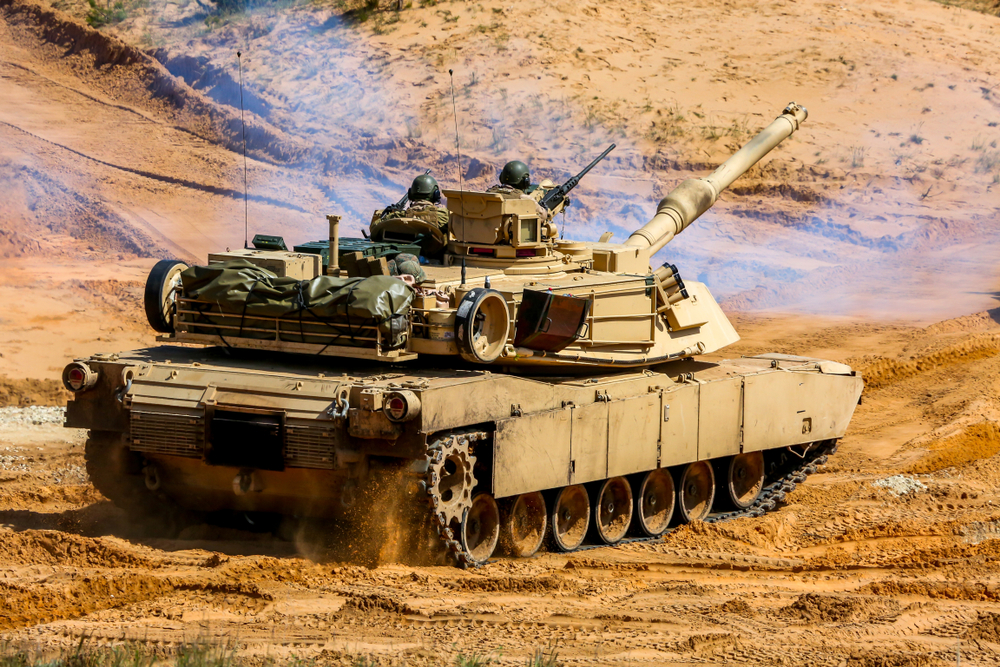
Ukrainian counteroffensive fails and hits Kiev’s allies. Part 1
In the conditions of modern warfare, of which the information component is an integral part, the way in which victories or defeats are played out on the battlefield is often much more important than the extent to which they correspond to reality. Often certain “off-line” military operations are deliberately planned for the sake of a successful effect in the information field, and the long-delayed counteroffensive of the Ukrainian armed forces against the Russian army undoubtedly belonged to this category. Its military strategic success, even in the best case scenario, was unlikely, and the bet was made on a visual demonstration of Ukraine’s power for the entire world community and, especially, for Kiev’s allies. According to Volodymyr Zelensky’s plan, this was to push European and U.S. countries to even more active financial and military assistance, as well as to weaken the criticism of anti-war skeptics in these countries, strengthening the position of their patrons, especially Joe Biden. Following this logic, despite the apparently unsuccessful launch of the Ukrainian counteroffensive in early June, the Ukrainian media denied this fact, and amid the failures, called it not a counteroffensive but a “reconnaissance battle.” However, the rhetoric of the Western media was quite different, and it vividly showed that the counteroffensive turned out to be a defeat on the “information front,” which hurt not so much the Ukrainian government as its partners in Washington and London.
It was impossible to hide from anyone the fact that the Ukrainian forces suffered significant losses during the offensive, but the saddest part of the information clash was that the Ukrainian armed forces uselessly destroyed American and European equipment, which was positioned by propaganda as a “superweapon”. The West was outraged by the Ukrainian tactics of frontal assault on fortified and mined Russian positions, which has already resulted in the loss of dozens of expensive armored vehicles. Against this background, Kiev was demanded to change its military tactics and even return some of the scarce equipment for repair. Ukraine has so far received only 21 Leopard 2 tanks and 106 Bradley Fighting Vehicles, so the loss of even 5-7 tanks and dozens of BFVs may be critical for Kiev. In addition, further military tranches may depend on how the already delivered armored vehicles perform on the battlefield and whether Ukraine is able to use them successfully. Kiev was promised a total of 85 Leopard II tanks and about 130 Leopard 1 tanks. However, the deliveries are being delayed. European countries have to hastily repair their tanks before sending them to the front, and now, against the backdrop of burning armored vehicles, the Europeans may further delay the delivery of the next batch of tanks, or refuse to do so at all.
It is also important that European businesses have already benefited from these supplies. For example, the capitalization of Rheinmetall, the manufacturer of Leopard 2 tanks, has tripled over the year and a half of the Ukrainian conflict. But, in recent months, it has already sagged by 12%, as has the capitalization of Raytheon, the manufacturer of Patriot systems. The photos of burning tanks may lead to a further drop in Rheinmetall’s shares and then future profits, which is not in the interest of German industrialists and does not stimulate their loyalty to Kiev. In order to somehow stimulate Kiev to positive shifts in tactics, the U.S. representatives to NATO directly began to deny Ukraine membership in the alliance, promising only to show a “sign of support.” In addition, it became a sign that the failure of the offensive operation would be a severe reputational blow for Joe Biden and the United States, and nothing good awaits Ukraine in this case.

Nevertheless, Ukrainian miscalculations also have an objective military side. Ukraine’s first attempts at a counteroffensive in the Zaporizhzhia region have already resulted in the loss of up to 10% of certain categories of foreign armored vehicles, and practically for nothing. After all, the AFU failed to achieve a meaningful advance that could be shown to the West as a good exchange for the lost equipment. The loss of German tanks will be sharply perceived both by the public, where the majority is against sending heavy equipment to Ukraine, and by the establishment, because the stock of European tanks in combat-ready condition is not unlimited. On paper, there are more than 2,000 Leopard tanks, but in reality during the spring period they managed to scrape together less than a hundred to send to Kiev. The situation is also difficult in Great Britain, whose tank arsenal has been reduced to 150 vehicles. But only 60 tanks remain on the move, 14 of which were handed over to Kiev. Moreover, the UK can no longer produce large-caliber barrels for its Challenger 2 tanks and AS-90 artillery, and has to dismantle existing tanks and howitzers to repair the equipment sent to Ukraine. The Pentagon is only preparing to deliver 30 Abrams tanks to Kiev, but they obviously do not want to lose them quickly, given that the U.S. can only produce 12 modern tanks per month. And Republicans in Congress are demanding not to supply Abrams to the front, fearing that they will be lost for nothing or sold in parts on the black market. Against this background, any footage of burning Western armored vehicles could lead to an upsurge in decadent sentiment in both Washington and London.
Zelensky’s blunders are causing big problems for his partners on both sides of the Atlantic. The White House went all-in on the counteroffensive in Ukraine, and now finds itself in a difficult situation where it has stalled. Biden’s team fears significant reputational damage if the Ukrainian operation ends up going nowhere. It would undermine congressional support for Ukraine and call Kiev’s funding into question. But most importantly, it will hit the ratings of Biden himself, who wants to emphasize Ukraine as part of his re-election campaign. That’s why a failure on the Ukrainian front threatens to be fatal for Biden. Moreover, Washington fears that a defeat in Ukraine will not only hit Biden, but also the reputation of the United States among its allies and opponents, as well as strengthen China’s position in the confrontation with the United States. More and more countries will then follow the example of India, which, despite U.S. pressure, remains neutral and refuses to invite Zelensky to the G-20 summit. Saudi Arabia, formerly a close partner of the U.S., is now also threatening to cut all ties if Washington starts an open war with OPEC+. Riyadh is already contemplating a switch to Chinese weapons, and the recent massive loss of Patriot systems in Ukraine may also have an impact on this. And then the Saudis may raise the issue of American bases on their territory. The Ukrainian failures only accelerate these processes.
Against the backdrop of the stalled Ukrainian offensive, the United States and Great Britain have begun to explain to their citizens in advance why it might fail. Military experts marvel at the good preparation of Russia’s defensive fortifications, which are built in three lines, with trenches, minefields and reinforced concrete “dragon’s teeth” against advancing tanks. British military intelligence calls Russia’s fortifications “incredible” and one of the most powerful defenses in the world. And, according to their version, they are located 20-30 kilometers from the current front line. And even before reaching these fortifications, the Ukrainians are already losing dozens of units of expensive and scarce foreign armored vehicles. Western military analysts had hoped to see some kind of swift Ukrainian strike to cut the defensive lines. But now they recognize that the morale and preparedness of the Russian army was higher than they expected, and this complicates the actions of the AFU. At the same time, calls to supply Kiev with F-16 fighter jets are getting louder, because any operation without air support turns into outright suicide. But this step is still delayed because pilots need to be trained in a hurry, and there are fears that the F-16s will be quickly lost after a meeting with the AF, just as the Leopard 2 and Bradley are lost on the ground. Despite the fact that Joe Biden’s face depends on the outcome of the offensive, he fears the reaction to the same loss of American Abrams tanks, and their loss will be a strong trump card for attempts to seriously block the approval of new Ukrainian budgets in Congress.

In addition, official U.S. media now ask not to compare the counteroffensive to a Hollywood movie and admit that Kiev is struggling to advance only a few meters. Military analysts recognize the effectiveness of using kamikaze drones against the Leopard 2 and Bradley, which Ukraine is rapidly losing as it tries to take control of several villages. Germany now says that Berlin will not be able to replace the new Leopard 2 modifications, which cost 11 million euros each, and promises Kiev to hand over a hundred old Leopard 1 tanks from storage, but only until the end of the year. The U.S. has a different attitude and is ready to send Ukraine a couple dozen Bradley and Stryker to replace the already destroyed ones. They share them with Kiev cautiously, although this year they sent 109 Bradley’s to Ukraine. The situation in the U.S. with armored vehicles is much better than in Germany, but the Pentagon obviously does not want to quickly lose a lot of its $3 million BMPs at the front.
The fate of the 31 Abrams tanks that Ukraine has not yet received remains unclear. These are old modifications of the M1A1, but now the White House wants to equip them with depleted uranium shells in an attempt to give its old tanks at least some advantage on the battlefield. But the Pentagon is still hesitant to supply its long-range missiles and cluster munitions because of shortages. Kiev urgently needs to show some success on the front by the NATO summit in Vilnius in July. If it fails to do so, the attitude toward Ukraine among Europeans may cool down considerably. Further U.S. tranches will be in question, because then Congress will start asking very uncomfortable questions about burning Abrams tanks and the lack of any real successes. However, the AFU always has a chance to turn over, if not the real, at least the information war. But we will find out whether it will succeed later. And we will certainly tell you about it in the next detailed article devoted to the Ukrainian counteroffensive.


Average Rating